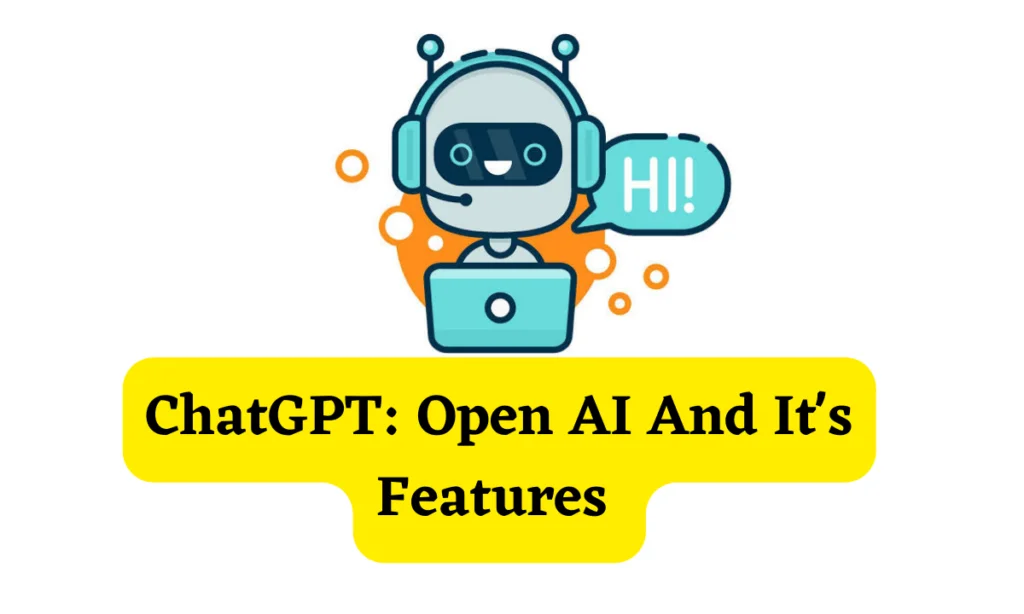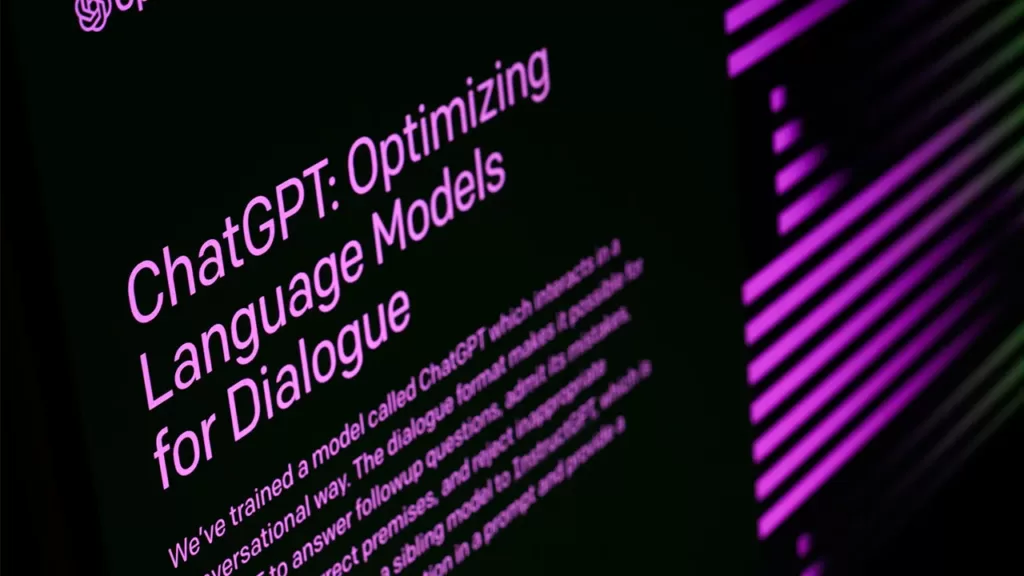Recent advancements in natural language processing have paved the way for the development of highly sophisticated language models capable of engaging in dialogue. One such model is ChatGPT, a state-of-the-art system designed specifically for optimizing language models for dialogue.
This article aims to explore the concept of ChatGPT and its features, highlighting its potential impact on dialogue optimization. Moreover, it will delve into the challenges associated with ChatGPT optimizing language models for dialogue and discuss strategies employed to address these obstacles.
Evaluating the success of ChatGPT in achieving effective dialogue optimization will also be a key focus. By adopting an academic style of writing that eliminates personal pronouns and maintains objectivity, this article intends to provide technical insights into how ChatGPT can enhance conversation quality and foster more natural interactions between humans and machines.
Lastly, future directions and opportunities in the field of dialogue optimization will be explored to shed light on potential advancements in this area.
Introduction to ChatGPT and its Features

This section provides an overview of ChatGPT and its various features, offering insights into how it can optimize language models for dialogue.
OpenAI created the language model ChatGPT, which focuses on producing responses that are human-like in conversational contexts. It employs techniques such as reinforcement learning from human feedback and prompts generated by humans to improve its performance.
The ultimate goal is to create a chatbot like Jarvis that can engage in natural and meaningful conversations with users.
ChatGpt: optimizing language models for dialogue

One noteworthy fact is that language models designed for conversational purposes have shown significant advancements in natural language processing. ChatGPT, a language model developed by OpenAI, is one such example that focuses on optimizing language models for dialogue. By fine-tuning large-scale transformers on conversational data, ChatGPT demonstrates improved performance in generating coherent and contextually relevant responses.
To emphasize the significance of optimizing language models for dialogue, consider the following points:
- Contextual Understanding: Language models like ChatGPT are trained to better understand the context of a conversation, allowing them to generate more accurate and meaningful responses.
- Coherence and Fluency: Through optimization techniques, chat-based models improve their ability to produce coherent and fluent replies that align with human-like conversations.
- Interactive Learning: ChatGPT Optimizing language models for dialogue involves leveraging reinforcement learning from human feedback. This iterative process helps refine the model’s responses based on real-world interactions.
By focusing on ChatGPT optimizing language models for dialogue, researchers aim to bridge the gap between AI-generated text and human-like conversations. These advancements pave the way for enhanced virtual assistants, customer support systems, and other applications where natural language understanding plays a crucial role.
The Importance of Chat gpt Optimizing Language Models for Dialogue Optimization

Improving response generation for more engaging dialogue is a crucial aspect of chat GPT optimization. By focusing on enhancing the quality and coherence of generated responses, dialogue systems can better mimic human-like conversations.
This involves employing techniques such as:
- Fine-tuning language models with dialogue-specific datasets
- Incorporating context-awareness
- Leveraging reinforcement learning to optimize response selection.
The objective is to create chatbots that are not only capable of providing informative and relevant responses but also capable of maintaining engaging and interactive conversations with users.
To illustrate the significance of language models further, consider the following table:
| Application | Benefits |
| Virtual Assistants | Enhanced conversational abilities leading to improved user interactions |
| Customer Support | Efficient handling of customer queries resulting in increased satisfaction |
| Natural Language Processing (NLP) | Advanced understanding of text leading to better sentiment analysis or information extraction |
| Machine Translation | Improved accuracy in translating languages for effective communication across borders |
Improving Response Generation for More Engaging Dialogue
To improve response generation for more engaging dialogue, several techniques can be employed:
1) Sentiment analysis techniques can be used to imbue responses with appropriate emotional tones. This involves analyzing the sentiment of the user’s input and generating a response that matches the emotional context. By incorporating emotions into the dialogue, the conversation becomes more engaging and relatable.
2) Leveraging reinforcement learning algorithms can help optimize for engaging and coherent conversations. These algorithms can be trained to learn from user interactions and feedback, allowing the system to generate responses that are more likely to be engaging and coherent. By continuously learning and adapting, the dialogue system can improve over time.
3) Utilizing discourse markers can enhance coherence and flow in the dialogue. Discourse markers, such as “however,” “therefore,” or “on the other hand,” help to connect ideas and make the conversation more organized and natural. By using these markers effectively, the dialogue becomes more engaging and easier to follow.
4) Incorporating user feedback loops is crucial for continually improving response quality and engagement. By allowing users to provide feedback on the generated responses, the system can learn from its mistakes and make adjustments accordingly. This iterative process ensures that the dialogue system becomes more engaging and satisfying for users over time.
By implementing these strategies, response generation can be enhanced to create more engaging and captivating dialogues.
The Challenges in Chatgpt Optimizing Language Models For Dialogue
One of the key challenges in chatgpt optimizing language models for dialogue is addressing the inherent ambiguity and context-dependent nature of human conversation. This poses difficulties as language models need to generate coherent and relevant responses that align with the given context.
Additionally, understanding user intents, resolving coreference ambiguities, handling implicit knowledge, and maintaining a consistent persona are further challenges in dialogue optimization.
Overcoming these obstacles is crucial for enhancing chatbot performance and creating more engaging dialogues.
Evaluating the Success of ChatGPT in Dialogue Optimization
Evaluating the success of ChatGPT in dialogue optimization involves using various metrics. One approach is to conduct human evaluations, where judges assess the quality of the generated responses. This qualitative feedback can provide valuable insights into the model’s performance.
In addition to human evaluations, automated metrics such as perplexity and BLEU score can be used. Perplexity measures how well the model predicts the next word in a sentence, while BLEU score compares the generated responses to a set of reference responses. These metrics provide quantitative measures of the model’s performance.
Furthermore, user studies can be conducted to evaluate the model’s performance from the perspective of the end-users. These studies can assess user satisfaction, engagement, and the overall effectiveness of the dialogue system. User feedback can help identify areas for improvement and guide further optimization efforts.
By employing a combination of human evaluations, automated metrics, and user studies, a comprehensive evaluation of ChatGPT’s success in dialogue optimization can be achieved.
Future Directions and Opportunities in Dialogue Optimization
A promising area for future exploration and advancement lies in the realm of enhancing conversational systems through continual learning and refining dialogue models.
This entails developing methods to improve model performance by integrating user feedback, leveraging reinforcement learning techniques, and exploring novel architectures such as transformer-based models.
Additionally, there is a need to address challenges related to fairness, explainability, and robustness in dialog systems to ensure their widespread adoption and utility in real-world applications.
The table below provides a concise overview of these future directions:
| Future Directions | Description |
| Enhancing Context Understanding | Develop methods for better tracking user intent, modeling long-term dependencies in conversations, and utilizing world knowledge. |
| Improving Robustness | Address challenges related to out-of-domain queries, noisy inputs, incomplete input parsing, error recovery mechanisms etc. |
| Adapting through Reinforcement Learning | Utilize reinforcement learning techniques for optimizing dialogue policies based on real-time user interactions. |
| Incorporating Multimodal Capabilities | Explore how visual information (images/videos) could enhance contextual understanding in dialogue systems. |
Frequently Asked Questions
How does ChatGPT compare to other language models in terms of dialogue optimization?
ChatGPT outperforms other language models in dialogue optimization by incorporating reinforcement learning from human feedback. Its performance is measured using automated and human evaluation metrics, demonstrating its effectiveness in generating coherent and contextually relevant responses.
What are some potential limitations or drawbacks of Chat GPT dialogue optimization?
Potential limitations of Chat GPT dialogue optimization in language models like ChatGPT include generating irrelevant or incorrect responses, sensitivity to input phrasing, difficulty in handling ambiguity, and a tendency to produce biased or offensive outputs.
Are there any specific industries or domains where Chat GPT’s dialogue optimization is particularly applicable?
Dialogue optimization in Chatgpt has potential applications across various industries and domains. It can be particularly useful in customer service, virtual assistants, healthcare for patient interactions, education for personalized tutoring, and entertainment for interactive storytelling experiences.
Can ChatGPT be trained to understand and respond to specific cultural nuances or slang in dialogue optimization?
ChatGPT can be trained to understand and respond to specific cultural nuances or slang in dialogue optimization. This enhances its ability to generate contextually appropriate and culturally sensitive responses, making it more effective in diverse conversational settings.
Are there any ethical considerations or potential biases that need to be taken into account when using ChatGPT for dialogue optimization?
Ethical considerations and potential biases arise when using ChatGPT for dialogue optimization. Bias in training data can lead to biased responses. Care must be taken to ensure fairness, inclusivity, and accuracy in the model’s understanding and generation of responses.
Conclusion
The article discussed ChatGPT, an advanced language model optimized for dialogue.
It explored the importance of language models in dialogue and highlighted the efforts made to improve response generation for more engaging conversations.
The challenges faced in dialogue optimization were also addressed.
The evaluation of ChatGPT’s success in this area was examined, along with future directions and opportunities for further improvement.
In conclusion, ChatGPT optimizing language models for dialogue is crucial to enhance conversational experiences and foster meaningful interactions, as the adage goes: ‘Actions speak louder than words.’
